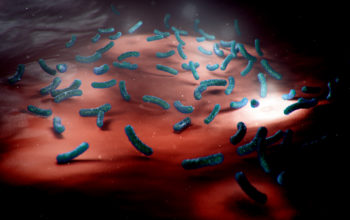
Date: 25th November 2019
Accurate and quick cancer diagnosis is often a key factor in improving survival rates. Last year, 17 million new cancer cases were diagnosed worldwide .
Now scientists from Duke University have designed simple DNA circuits to identify cancer cells by the molecular signatures on their surface.
The team, led by John Reif, exploited a characteristic of cancer cell membranes. Each cancer type exhibits a signature set of cell membrane proteins. The researchers designed DNA circuits that recognise and latch-onto specific protein combinations, which decreases the chance of identifying false positives or negatives.
By designing DNA circuits that detect a set of proteins rather than one or two, the Duke team hoped to increase specificity and cut down the rate of mistaken identity that are observed in current systems.
DNA circuit design
The DNA circuit consisted of two strands of partially overlapping DNA which formed a stable structure. Each end of a hairpin created by the first strand was bound to a second strand of DNA that acted as a lock and tether, folding in such a way to fit a specific cell surface protein like a puzzle piece.
When a repertoire of different hairpin designs were added to human patient cells in vitro, and bound to a target cell, a circuit became completed when a sufficient number were bound to that cell. The subsequent addition of a strand of ‘initiator’ DNA then caused one of the hairpins to open, setting off a chain reaction across the hairpin field and resulting in the final hairpin opening and lighting up the cell.
Applications
The team showed that the approach can be used to detect leukaemic cells within hours, and was able to distinguish them from other cancer cell types by quantifying the strength of their glow.
The system is highly programmable and, by replacing the tether strands, different cancer cell types can be identified.
Whilst the team acknowledge this is far from being clinically ready, further tests and optimisations will potentially see this technology able to accurately and quickly detect cancer. Further down the line, it could be incorporated into cancer screens and diagnosis, providing valuable information for clinicians to determine treatments for individual patients depending on the molecular signature of their cancer type.
For more information please read the press release from Duke University.
Song, T., S. Shah, H. Bui, S. Garg, A. Eshra, D. Fu, M. Yang, R. Mokhtar and J. Reif (2019). “Programming DNA-Based Biomolecular Reaction Networks on Cancer Cell Membranes.” Journal of the American Chemical Society 141(42): 16539-16543.
https://doi.org/10.1021/jacs.9b05598


